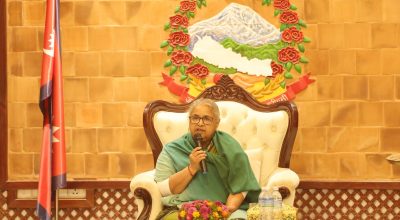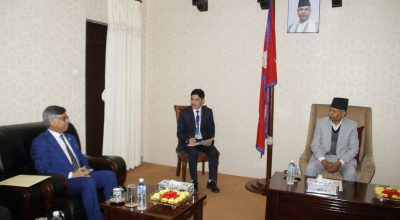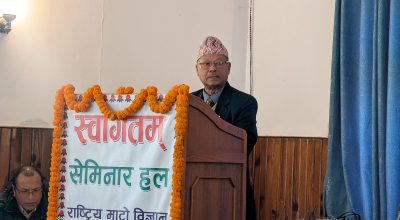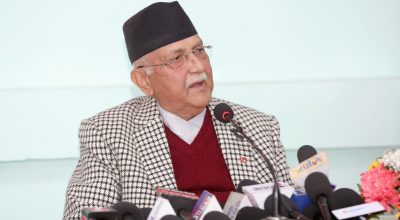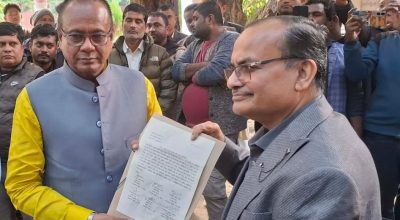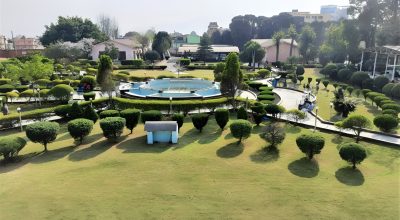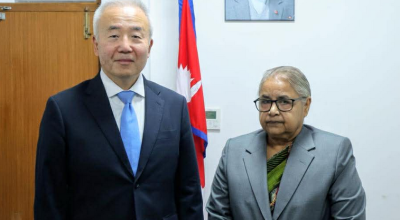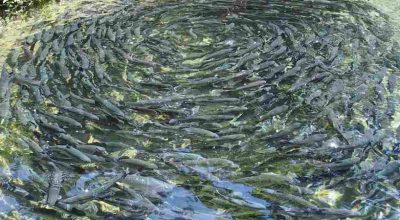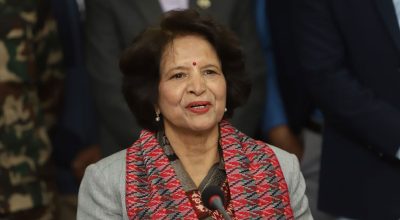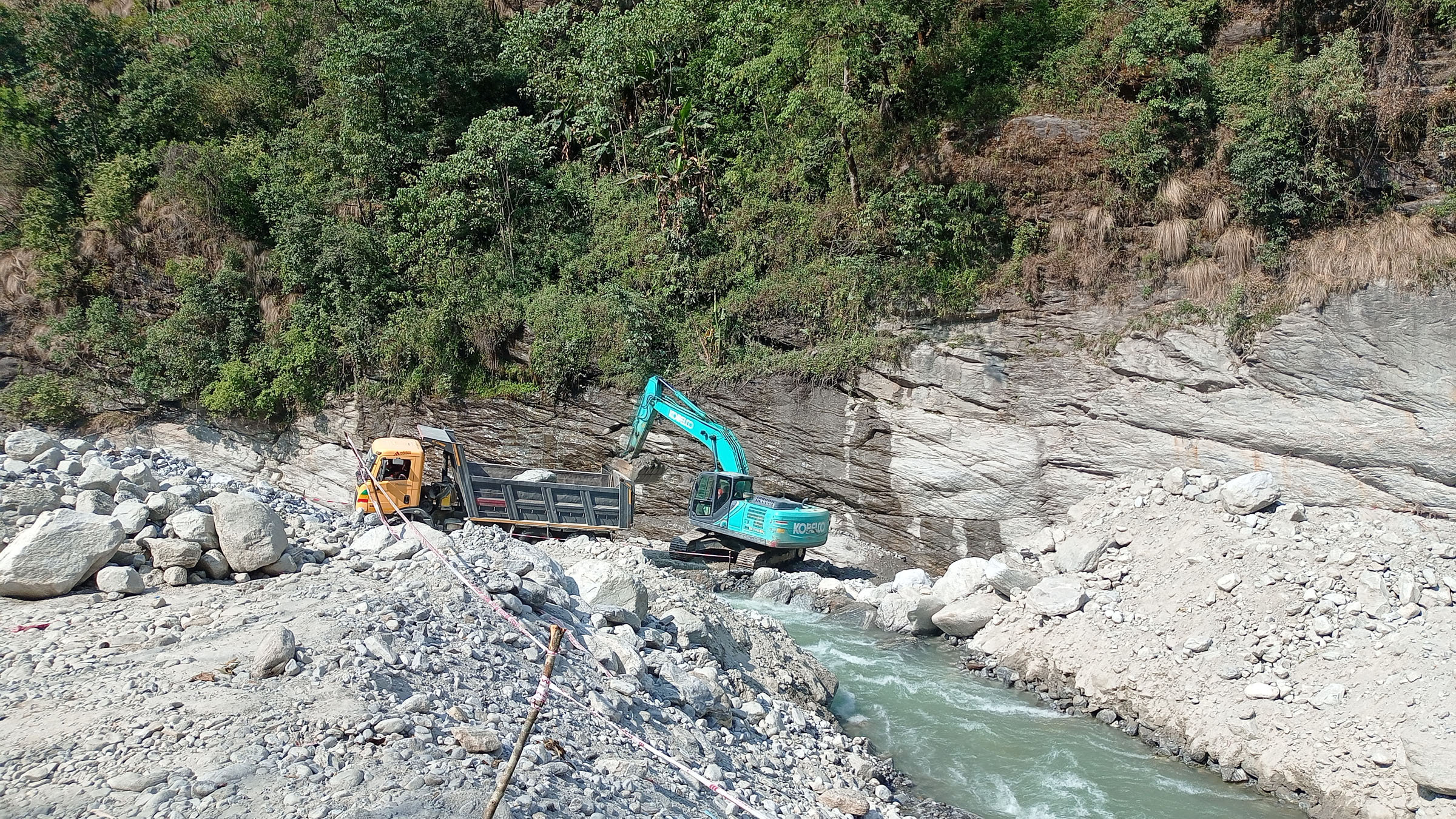
Bhishma Raj Ojha
Kathmandu: It has been over one and a half years since the Melamchi flooding struck, the reconstruction work has not taken place in full-fledge.
Many people lost their lives in the flooding that took place at some parts of Sindhupalchok district including Helambu and Melamchi, while hundreds of private houses and structures were destroyed, cussing a huge loss of properties. The affected people are yet to come to terms with the tragedy, as their lives still remained painful without reconstruction work.
The river area spanning from Ambathan of Helambu, the intake site of the Melamchi Water Project, to the Melamchi bazaar are still covered in stones, gravels and silts deposited by the flooding. Dozens of concrete houses are seen lying on the ground while arable lands and the entire settlements have turned into a desert-like.
The central government carried out reconstruction work and rehabilitation by developing a special package post disasters. But, the government did not take any initiatives in this regard, complained the flood victims.
The water project that aims to distribute drinking water to the Kathmanduites is struggling without support of the concerned authorities.
Details of the losses caused by the flooding are yet to come by, said Nima Gyaljen Sherpa, chair of Helambu Rural Municipality.
Apart from the construction of a bailey bridge at Chanaute, the government has not provided a big help with the reconstruction, he complained.
In addition to this, people are facing inconvenience for movement as there are no bridges in other locations. The flood had caused the massive losses of lives and property.
During an interaction with a team comprising environment, climate change and development and media representatives from the government and non-government sectors that reached Helambu to assess the post-disaster life, chair Sherpa said though the local government was doing its best to cope with the situation, its sole efforts were not sufficient to restore the things and compensate the survivors.
“The suffering of the Helambu folks should be the concern of the federal government, but it did not happen,” he complained, adding that the cause of the disaster is yet to be established by a study. “We are confused whether it was a consequence of climate change or due to other reasons.”
Compensate for the consequence of climate change must be used in the affected-areas and we have appealed for climate change justice in the local government’s policies and programmes.
The interaction was jointly organised by an organisation ‘Saath Sathai’ Foundation and the Helambu rural municipality.
During the programme, joint-secretary at the Ministry of Agriculture and Livestock Development, Sabanam Siwakoti, said that a shift in rainfall patterns had its implications on agro productions and people’s lifestyle.
She spoke the need of study and research and verified data to establish the causes of disasters happening each year instead of linking them roughly with climate change.
Director General of Department of Plant Resources, Ministry of Forests and Environment, Dr Radha Wagle, said though Nepal has almost no role in carbon emissions, it is highly vulnerable to its consequences.
It is necessary for the government to cooperate with international agencies for compensation during such major disasters.
Stating that Nepal is not the only responsible country for disasters taking place due to the climate change, environmentalist Dr Prabhu Budhathoki, also former member of the National Planning Commission, stressed the need for providing compensation to the victims not as a victim, but as their right.
Saying impacts of climate change in the world are proved to be exhibiting, Former Vice Chancellor of the Nepal Academy of Science and Technology (NAST) Dr Jibaraj Pokharel underscored the need for trying to control them alongside making lifestyles of people adaptable.
Chairperson of Sath Sathai Prajita Karki stressed that the bodies concerned should pay attention to minimizing the climate change impact as it is women, children and minorities communities who are affected the most from the climate change.
A special documentary depicting the Helambu disaster was screened in the programme. The documentary is directed by journalist Bal Krishna Basnet. This documentary was also shown in the COP 27 held in Sharm-el-Shekh of Egypt last October.
Federation of Nepali Journalists (FNJ) former president Dr Suresh Acharya, Roshani Adhikari from Nepal Forum of Environmental Journalists (NEFEJ), journalists Bishnu Khadka, Jagannath Dulal, Kamala Pakhrin, FNJ Sindhupalchok district chapter Jeevan Shrestha, among the speakers at the programme, spoke on the impact of the flood and landslide in the Helambu area and the ways of addressing the problems caused by it.
Helambu Rural Municipality and Sath Sathai sign MoU
The Helambu Rural Municipality and Sath Sathai have signed a memorandum of understanding (MoU) on collaborating in reducing the impact of climate change following the damage wreaked by the massive floods and carrying out social development works in Helambu Rural Municipality.
Rural Municipality chairman Sherpa and Sath Sathai chairperson Karki signed on the MoU on behalf their respective institutions.
The MoU stipulates conducting study and research on the impact of climate change in Helambu area and carrying out various programmes to mitigate the climate change-induced loss and damage, and promotion of education, health, awareness, local tourism and women and children rights and interests in the area.
Additionally, various adaptation programmes would be conducted to mitigate climate change impact, a public awareness campaign run for climate justice and the attention of the national and international stakeholders drawn under the partnership.(RSS)





